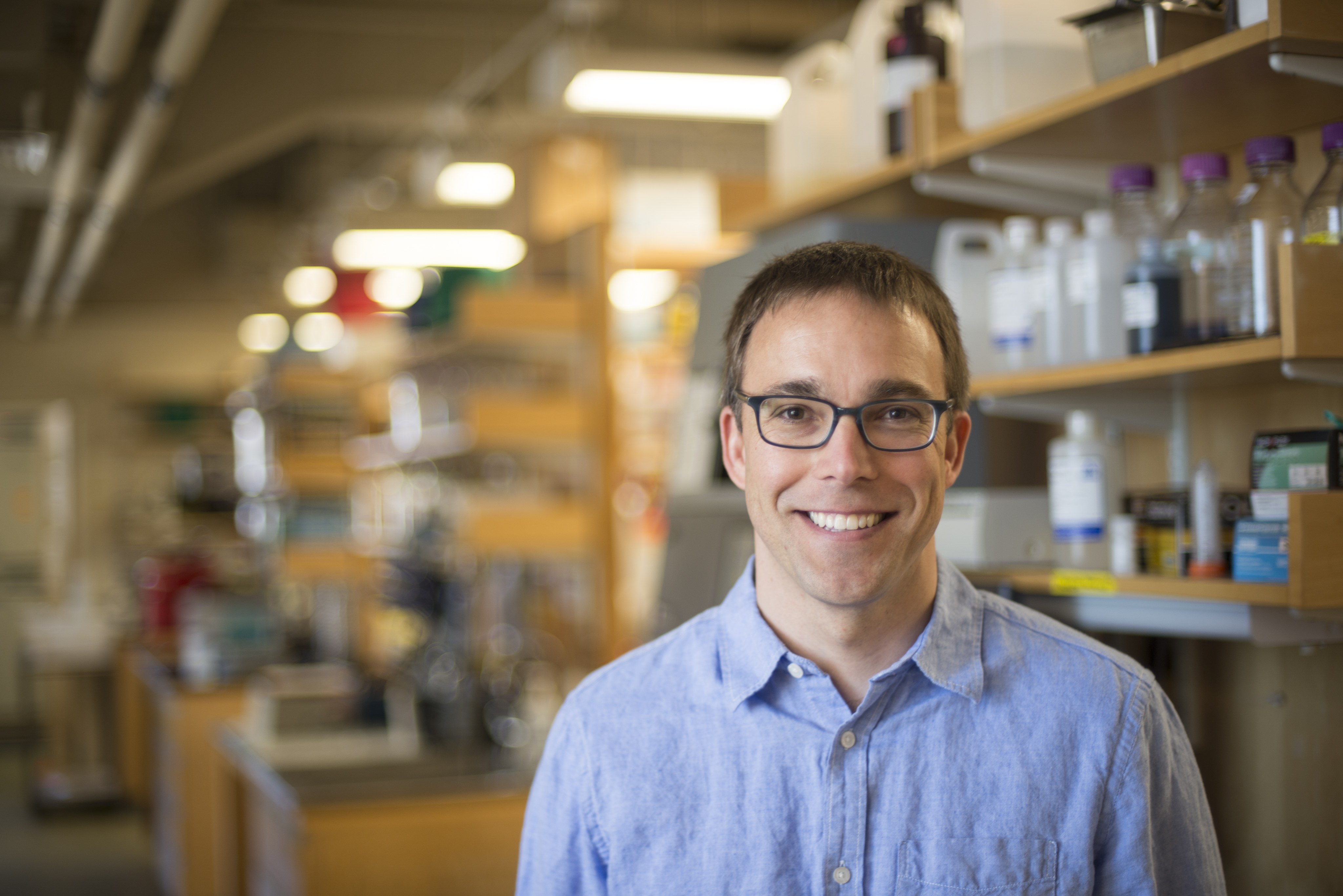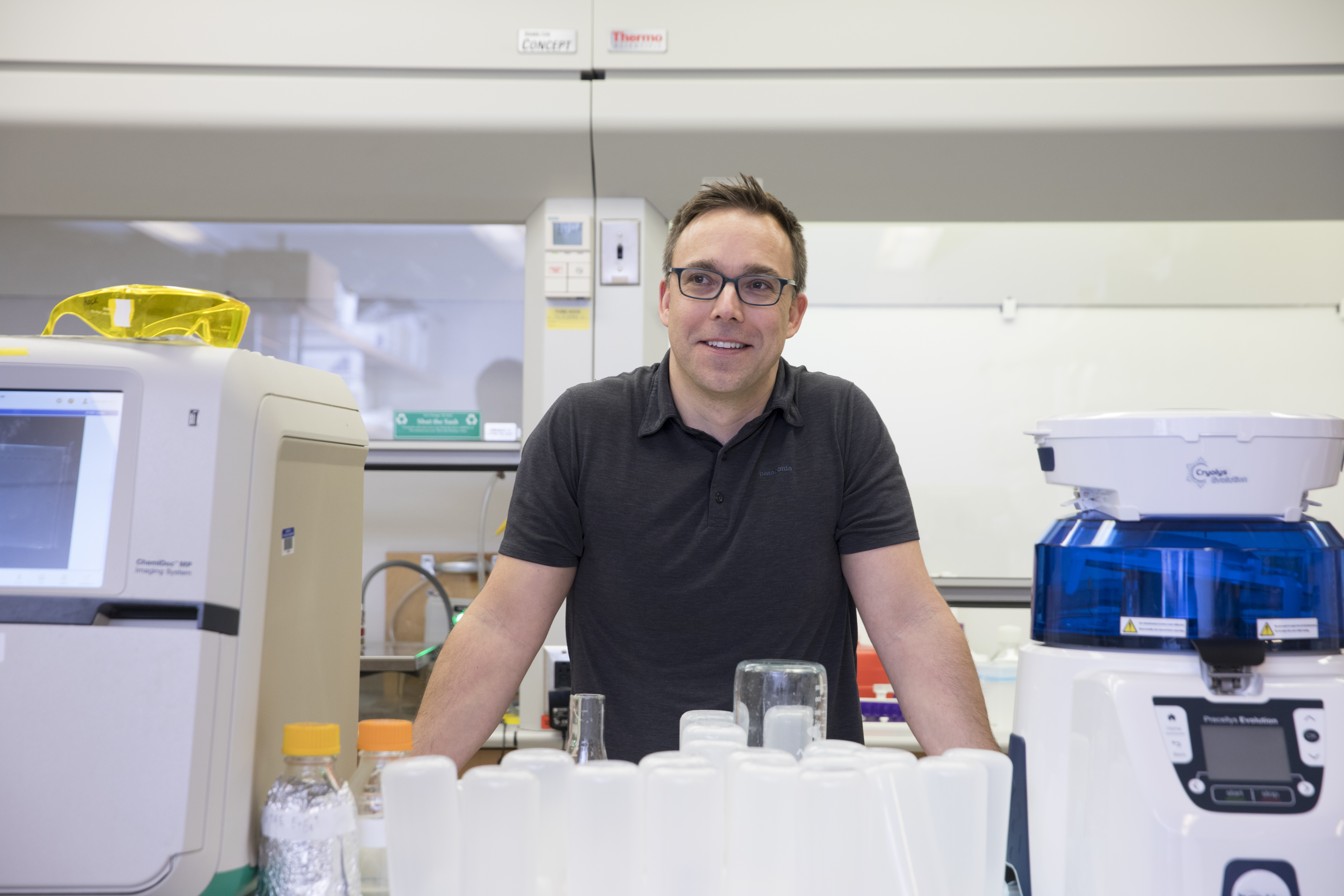Audrey Goldfarb


Dr. Jeremy Rock heads the Laboratory of Host-Pathogen Biology located on the south side of the River Campus Research Building. Rock studies Mycobacterium tuberculosis (Mtb), a bacterium that exclusively parasitizes humans. Tuberculosis (TB) is the leading cause of death from infectious disease, but Mtb biology is still poorly understood.
Rock pursued his interest in Mtb after completing his Ph.D. at the Massachusetts Institute of Technology working with yeast, the exhaustively characterized workhorse of genetics. “I did a Ph.D. in yeast genetics, and I loved it,” Rock said. “The rigor and depth with which you can answer a question in this model organism is second to none. But I wanted to move to an area that was more directly medically relevant, and in which there was a lot of big, unanswered questions.”
Immediately, there were challenges. Yeast doubles once every ninety minutes, and E. coli every twenty. To the disadvantage of Rock and his colleagues, Mtb’s doubling time is a full twenty-four hours. “It was not a painless transition,” Rock said. “Everything grows faster than TB. So, if you don’t have sterile technique everything gets contaminated.”
Rock wanted to identify essential genes in Mtb using CRISPR in order to reveal potential therapeutic targets. However, the traditional CRISPR systems used in other organisms did not seem to work in Mtb. It took Rock two years of his postdoctoral fellowship to identify the Cas9 allele that could edit the Mtb genome.
His lab at Rockefeller is now able to identify hundreds of candidate genes from a single CRISPR screen. “We can do 100,000 experiments at once,” Rock said. “We have a lot of very interesting hits, and we’re now trying to figure out the biology. This is what we wanted to do with it, and it’s actually working.”
Using CRISPR guides of different strengths, Rock is able to knock down essential genes to varying degrees. This ranks essential genes by their vulnerability: even slight knockdown of some genes in Mtb is lethal, while others require more robust depletion to kill the bacterium. If a gene product requires minimal inhibition to elicit a therapeutic benefit, it can more easily be targeted by drugs.
Though the lab is less than two years old, Rock is already thrilled with the people he has recruited. “They’re a very hard working, collegial bunch,” he said. “Everyone collaborates and helps each other. These are people I spend a lot of time with, and they’re all people I love being around.”
The lab’s productivity is due in large part to the bioinformatics expertise of computer scientist Dr. Michael DeJesus. “He’s just phenomenal,” Rock said. “The math behind what we’re doing pretty quickly got complicated to the point where we needed someone like him. He was the perfect person to bring in.”
Developing CRISPR in Mtb was a huge hurdle with a huge payoff. “It was slow, it was hard, and it didn’t always work,” Rock said. “But it was clearly a problem that was important, and it was going to open a lot of doors.”
Rock also acknowledged the support he has received throughout his career, especially as a new faculty member at Rockefeller. “When you start a lab, you have to build it from the ground up,” Rock said. “But it’s not like you do that alone. Both junior and senior faculty were very welcoming, and the administration is amazing. They really take care of you and help you in this process.”
Rock is excited to pursue mechanistic studies to nail down the detailed biology of Mtb. Collaborations to elucidate pathways and structures may be on the horizon. “We like screening for genes that contribute to interesting phenotypes, and now that we have lots of hits we’re excited about and zooming in on more mechanistic studies,” Rock said.
Meaningful success in science is usually preceded by myriad failures, making hard work and persistence essential even for talented minds. “A lot of this job is just tenacity,” Rock said. “That goes a really long way. In order to be tenacious, you have to really love your project. Science is never easy, but you’ll figure it out.”
